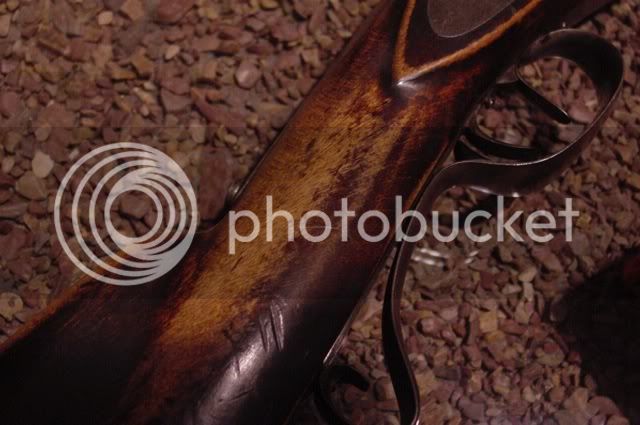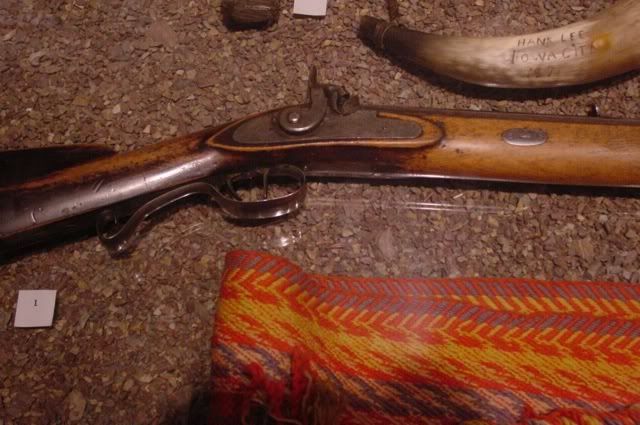ebiggs said:Personally I would never use linseed oil, boiled or not, on anything. There are just too many highly superior finishes available. I suppose if a person was making an as accurate as possibile HC/PC gun it may change my mind but not for much of anything else.
My grandfather and I used it 50 years ago but we didn't have all the goodies available now. We even used shellac which I do still use if a client specifies it.
But to the point, I prefer tung oil finish with Johnson's Paste wax. I have that on my first muzzle loader and it is from the 1970's and has not turned color because of the wax. I wax everything, even the brass.
Tung oil has its advantages but was not generally available in America until the late 19th c.
Linseed oil properly prepared has been used successfully on gunstocks for centuries. Most of the "superior" modern finsihes will fail in a surprisingly short period of time when exposed to the weather. Linseed oil finishes, the "long" or "fat" ones as used on gunstocks will not.
A simple test is to coat a piece of hardwood with the selected finish allow to cure then drop a 50 caliber round ball on the test piece from about 36". Then look for microcracks with magnification. Permalyn, I am told, will not survive this nor will most hardware store varnishes. I have examined rifles finished with a linseed oil varnish that STILL have no cracks or chips even though they were varnished in the 1840s-50s-70s. Sometimes the varnish is worn OFF but it will still have an intact film even where light to moderately dented.
This is an example of a rifle finished with a linseed oil varnish.


This stock was not stained. Any color was from the varnish used. It may have been lighter when made. Linseed oil will darken if exposed to airborne sulfur such as from burning coal. As a result many rifles in the east have very dark finishes where it has survived.
Note that this finish did not soak into the wood. This indicates that its probably a one coat finish with a viscous varnish that was not intended to penetrate. It was a fast way to finish a stock. Not the best but was considered adequate at the time. It is unlikely that its sealed under the metal parts.
Excessively hard "waterproof" finishes will not do this, they crack and them pass water into the wood. It is virtually impossible to waterproof a piece of wood short of impregnating it with epoxy.
The other test is to paint it on wood then put it out in the yard, hang it on a fence ect. for 6 months and see how it looks.
Properly prepared linseed oil will stand this test. Few modern finishes will. Nor will many modern stains survive this without color change. But ferric nitrate will the common stain for curly maple in the past.
The primary reason people don't like linseed oil is that it can be "difficult" if they use the wrong oil or don't know how to use it properly.
If made in large batches for use as stock finsih it may need to be reheated to restore its drying properties before its used up. The basic "boiled oil" bought from the lumber/hardware store seems to vary in its drier content which also throws a wrench in the process so now I add more drier than I did previously. I am planning to make some Gum Benzoin based oil varnish as soon as I get the ambition.
Modern "boiled" linseed oil is not what was used in the past for stock finish (or much or anything else). It is at best a raw material for a boiled oil stock finish.
Many M1 Garand stocks were simply put in a vat of warmed RAW linseed oil for finish. For military purposes this worked well since raw oil gives a dull that will not take on a shine with handling as boiled oil will. The oil will still weep out of now 70 year old stocks nor has it failed in anyway. But few people want this for a stock finish on a sporting guns.
P.S. "Boiled" oil is now all cold processed SFAIK and even back in the day it was only heated for processing not heated to boiling which will generally cause it to flash into flame since it boils at very near its ignition temperature.
Store bought boiled oil generally dries with agonizing slowness. Properly cooked, acid reduced oil with some drier and perhaps some resin added will dry much faster and in summer with exposure to bright sun will allow more than one coat in a day in most cases. Maple can be finished for a working gun in one penetrating coat. Better finish only requires a couple of days with the right oil.
This is a seal coat and a top coat on a pistol. 2 coats total. Careful wood prep BEFORE staining. Stain is ferric nitrate (nitric acid depleted with iron).

Total finish time? Maybe an hour with the staining.
The old time gunsmiths did not have the time to put on 40 coats of oil. They were trying to make a living.
One other things, modern plastic finishes LOOK like modern plastic finishes. They do not enhance the wood.
People that don't want to mess with heating oil and adding stuff too it can likely find a good finish in Chambers Oil finish and I think Tried and True varnish oil is good from reports.
Its virtually impossible to find a stock finish in the lumberyard or almost anyplace else that is not mostly Stoddard Solvent. Check the MSDS on the stuff. The solvent content (toxic fumes) and the increased labor needed are the reasons I gave up on solvent based varnishes years ago.
Dan





